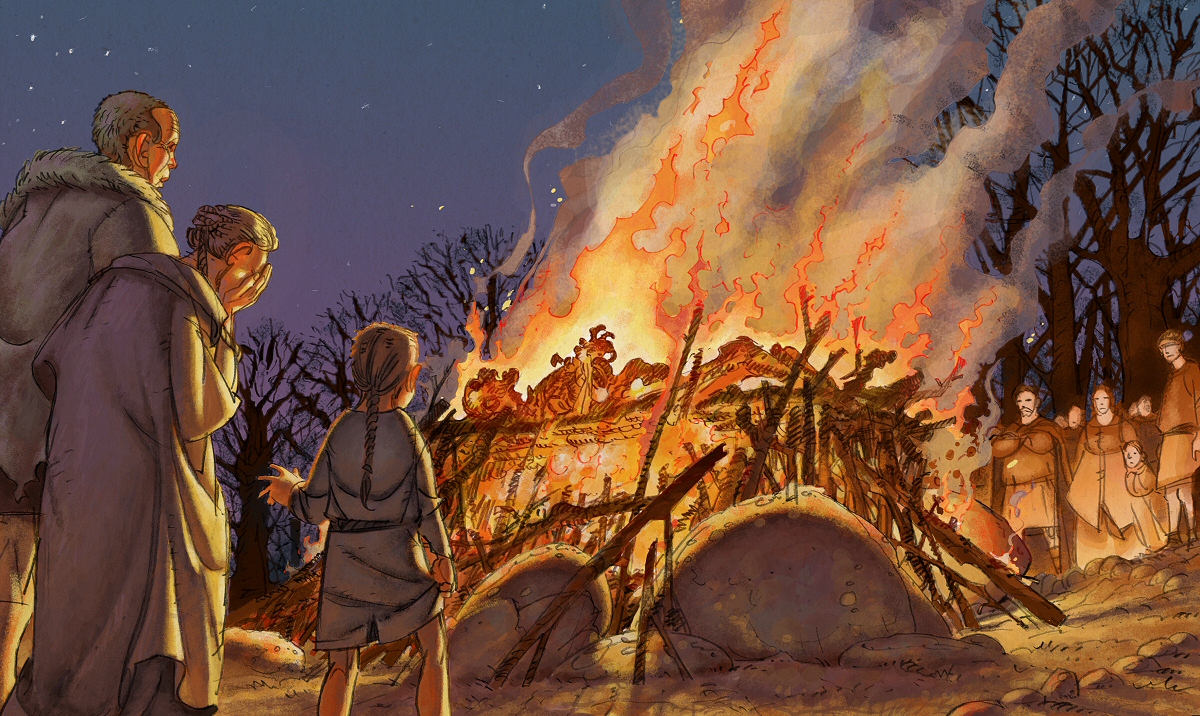
Vikings, famous for their funeral pyres, once participated in a similar open air cremation ritual, but the tradition ended when Christianity was introduced around 1050 AD.

Suttee was outlawed in 1829 under British rule. In some instances this was voluntary, other times the wife would be forced into the flames.

In many instances, Hindu cremations also included a custom called suttee or sati, which translates as “good woman” or “chaste wife.” The custom was for the widow of the deceased to throw herself onto the funeral pyre of her husband. Finally, the remains were immersed in the holy waters of the Ganges river, or other local rivers for those who lived too far away. One or two days later, the chief mourner returned to the place of the cremation, collected up any remains and placed them in an urn. Family and friends waited for the body to be fully consumed by fire before going home. Next, he lit a small fire in the mouth of the deceased before the entire structure was set alight with a flaming torch, signalling the beginning of the mourning period. Once a suitable location was found, the corpse was laid on the prepared pyre with its feet facing South so that it could walk in the “direction of the dead.” The closest male relative of the deceased acted as chief mourner and walked around the pyre three times, keeping the body to his left and sprinkling water onto it. Traditionally, the cremation ground was located near a river, ideally right on the banks. Hindus believed transmigration was necessary in order for the soul to enter a new body during its next life. Hinduism required cremation as it was believed to help with transmigration: the separation of the body from the soul. Perhaps the origin of this cremation technique, people in India have been performing open air cremations for thousands of years. A funeral pyre is a wooden structure on which a body is burned. “In the beginning, it was very emotional for me, burning bodies,” he said.Pyres have been a part of funeral rites throughout many time periods and geographical areas in history. The last time he saw this many bodies was in 1988, when scores were killed in a stampede at a stadium here.īut after three decades attending to Katmandu’s departed, Adhikari said he must keep himself at a certain remove, no matter how great the tragedy or injustice. But like many Nepalese men, Shrestha’s sons were working overseas and had to fly home for her funeral, so her rites were delayed until Monday.Īdhikari, a father of four, said he hasn’t been this busy in nearly three decades. Ideally, the dead are cremated on the day of death or the day after. Then the platform is washed clean, and another body is prepared in its place.

Once the corpse is cremated, the charred timber and ash are pushed into the Bagmati. After that, there are add-ons such as pallbearers to carry the stretcher down to the waterside. The sal logs must be hauled atop the platform and properly stacked into a rectangle several tiers high, the fire tended and stoked until the body is reduced to ash.īesides fees for the burners, families must also pay for the wood, and a fee for the pyre space. “It is very busy these days,” he said, squatting by the embers of Shrestha’s pyre and counting his daily earnings as he smoked a cigarette.īurners such as Adhikari earn about $10 per corpse, a decent sum, although the work is hard. Since Saturday, however, he’s performed five or six burnings regularly. Normally, he said, he tends to one or two families a day. Khadka Adhikari, 55, has been burning bodies at Pashupatinath for 30 years. “Daddy!” one called out with a piercing intensity as young men milled about, stone-faced. Wives and daughters wailed along the riverside. A gray military helicopter, perhaps on an aid mission, shuddered overhead. Trucks stacked with kindling were backed up to the waterside, spooking monkeys who had stopped to drink from the grayish flow.Īs the afternoon wore on, the sun slipped behind clouds and smoke filled the air. Rugged 4x4 military vehicles outfitted as hearses arrived with depressing frequency. By Monday afternoon, burners were working in the muddy flats, tending to dozens of pyres among the soggy reeds in the river. The demand for funerary services at Pashupatinath has become so intense that its 11 stone platforms had become oversubscribed.


 0 kommentar(er)
0 kommentar(er)
